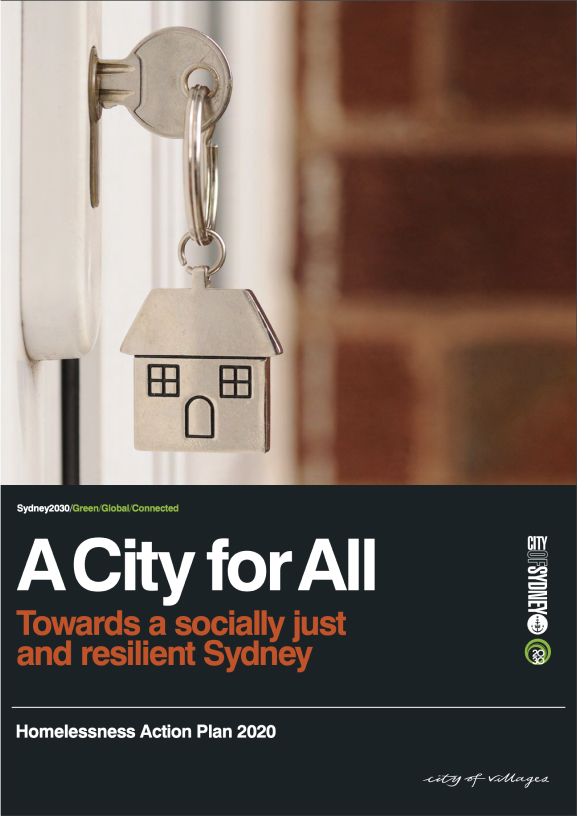Street counts
Help us monitor progress and develop responses to reduce the numbers of people experiencing homelessness in the local area.
Street counts aim to collect accurate and up-to-date information about the number of people sleeping rough in the local area. Occupied beds in temporary shelters and homelessness hostels are also counted.
People living in boarding houses, staying with friends or living in other forms of non-secure housing are not counted. No information regarding the specific location of rough sleepers is published or released.
Street counts take place in February every year. Each count relies on the goodwill and participation of more than 150 volunteers.
We actively seek the advice of people who are currently homeless or have experienced homelessness in the past. To date, 50 different individuals with lived experience of homelessness have advised and assisted us in multiple street counts.
Our homelessness unit develops responses to homelessness according to need. Street count results are regularly used to advocate to state and federal governments, along with potential partners, for the resources necessary to achieve enduring solutions to homelessness.
A key part of the our homelessness action plan, the street counts also help to monitor the progress of our organisation and partners in reducing the numbers of people experiencing homelessness in the local area. Counting the numbers of people experiencing primary homelessness is only 1 method of collecting data but it’s an important one.
When and why we do this
The yearly City of Sydney street count takes place in February, the same time as the state street count, coordinated by the NSW Department of Communities and Justice. This timing provides a state-wide assessment of strategies and responses to reduce homelessness.
Before 2022, our street counts were conducted twice a year in February and August. Due to Covid restrictions and impacts, the August counts did not proceed in 2020, 2021 and 2022.
Each count relies on the goodwill and participation of more than 180 volunteers. We seek the advice of people who are homeless or have experienced homelessness in the past. To date, 50 different individuals with lived experience of homelessness have advised and assisted us in multiple street counts.
Our homelessness unit develops responses to homelessness according to need. Street count results are regularly used to advocate to state and federal governments, along with potential partners, for the resources necessary to achieve enduring solutions to homelessness.
A key part of the our homelessness strategy, the street counts also help to monitor the progress of our organisation and partners in reducing the numbers of people experiencing homelessness in the local area.
Counting the numbers of people experiencing primary homelessness is only 1 method of collecting data but it's an important one.
Results of recent street counts
- These tables show results of recent counts, which covered about two-thirds of the local area.
- Around 150 volunteers, including 18 advisors, participated in each street count.
- The methods we use to conduct the street count have been adapted and refined in consultation with people with lived experience of homelessness to ensure sensitivity and accuracy.
| Date | People sleeping rough | Occupied crisis and temporary accommodation beds |
|---|---|---|
| February 2017 | 433 | 489 |
| August 2017 | 386 | 600 |
| February 2018 | 329 | 495 |
| August 2018 | 278 | 495 |
| February 2019 | 373 | 522 |
| August 2019 | 254 | 592 |
| February 2020 | 334 | 505 |
| August 2020 | Count did not take place due to Covid-19 restrictions. | |
| February 2021 | 272 | 288 |
| August 2021 | Count did not take place due to Covid-19 restrictions. | |
| February 2022 | 225 | 269 |
| August 2022 | Count did not take place due to impacts of Covid-19. | |
| February 2023 | 277 | 299 |
| February 2024 | 280 | 392 |
| February 2025 | 346 | 380 |
| Date | Rough sleepers | Occupied hostel beds |
|---|---|---|
| February 2010 | 418 | 470 |
| August 2010 | 289 | 541 |
| February 2011 | 363 | 477 |
| August 2011 | 307 | 448 |
| February 2012 | 310 | 451 |
| August 2012 | 246 | 456 |
| February 2013 | 274 | 463 |
| August 2013 | 255 | 471 |
| February 2014 | 346 | 446 |
| August 2014 | 296 | 421 |
| February 2015 | 365 | 462 |
| August 2015 | 352 | 476 |
| February 2016 | 486 | 404 |
| August 2016 | 394 | 417 |

